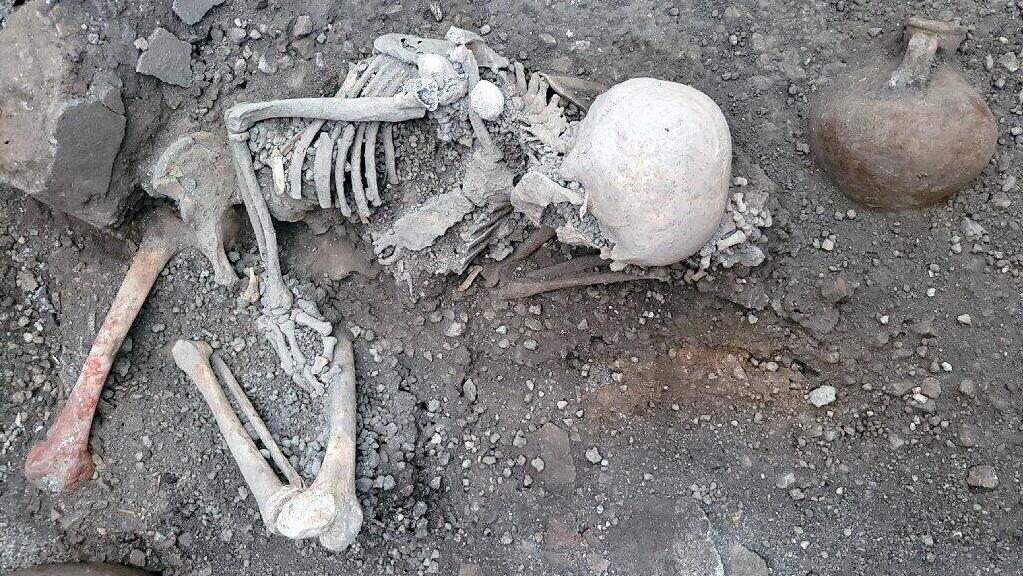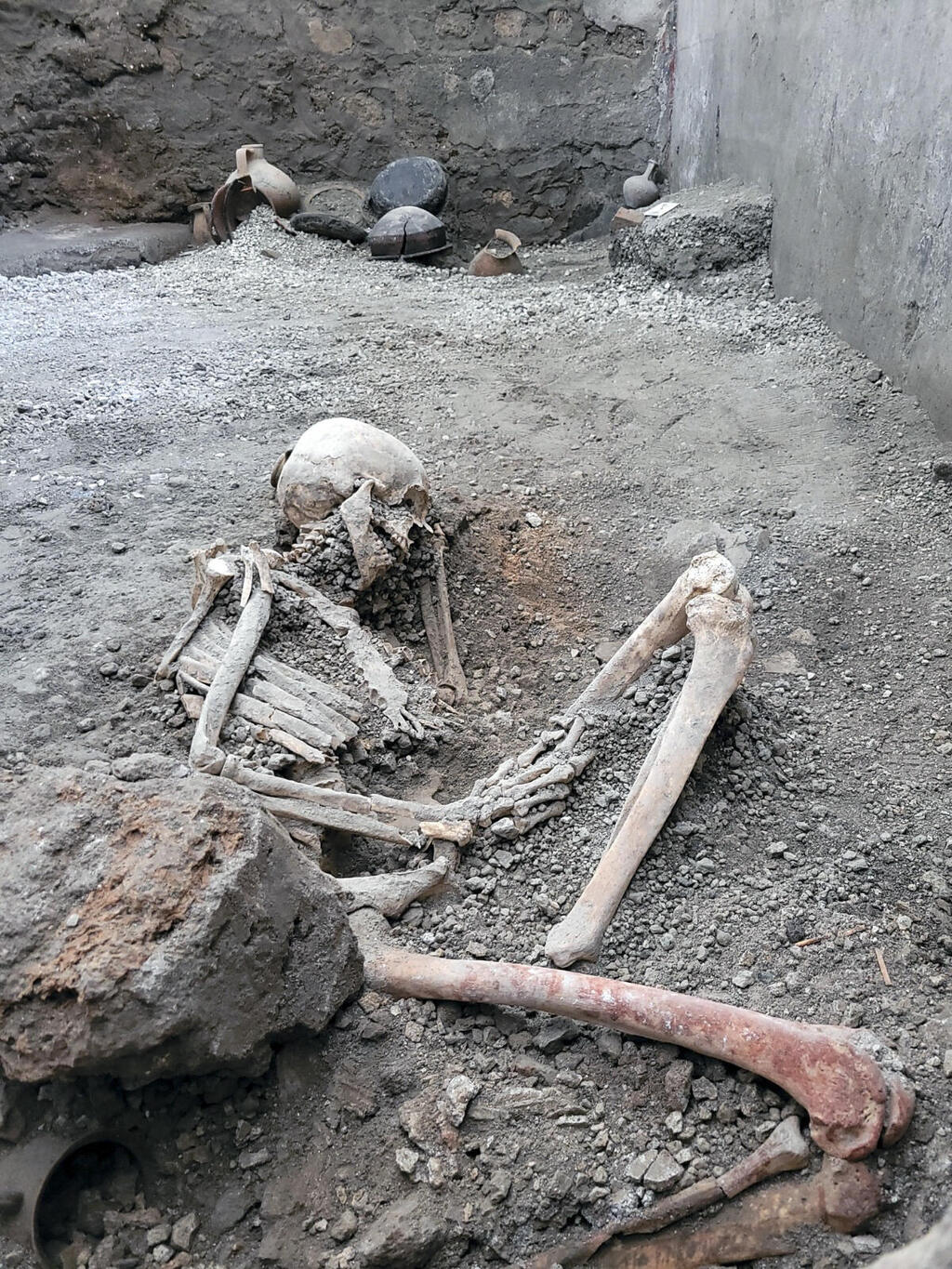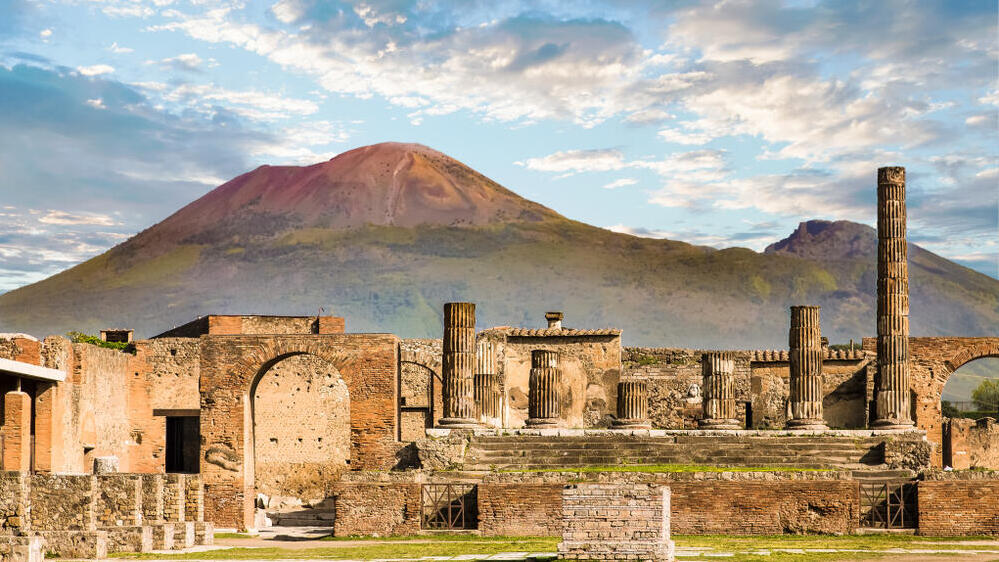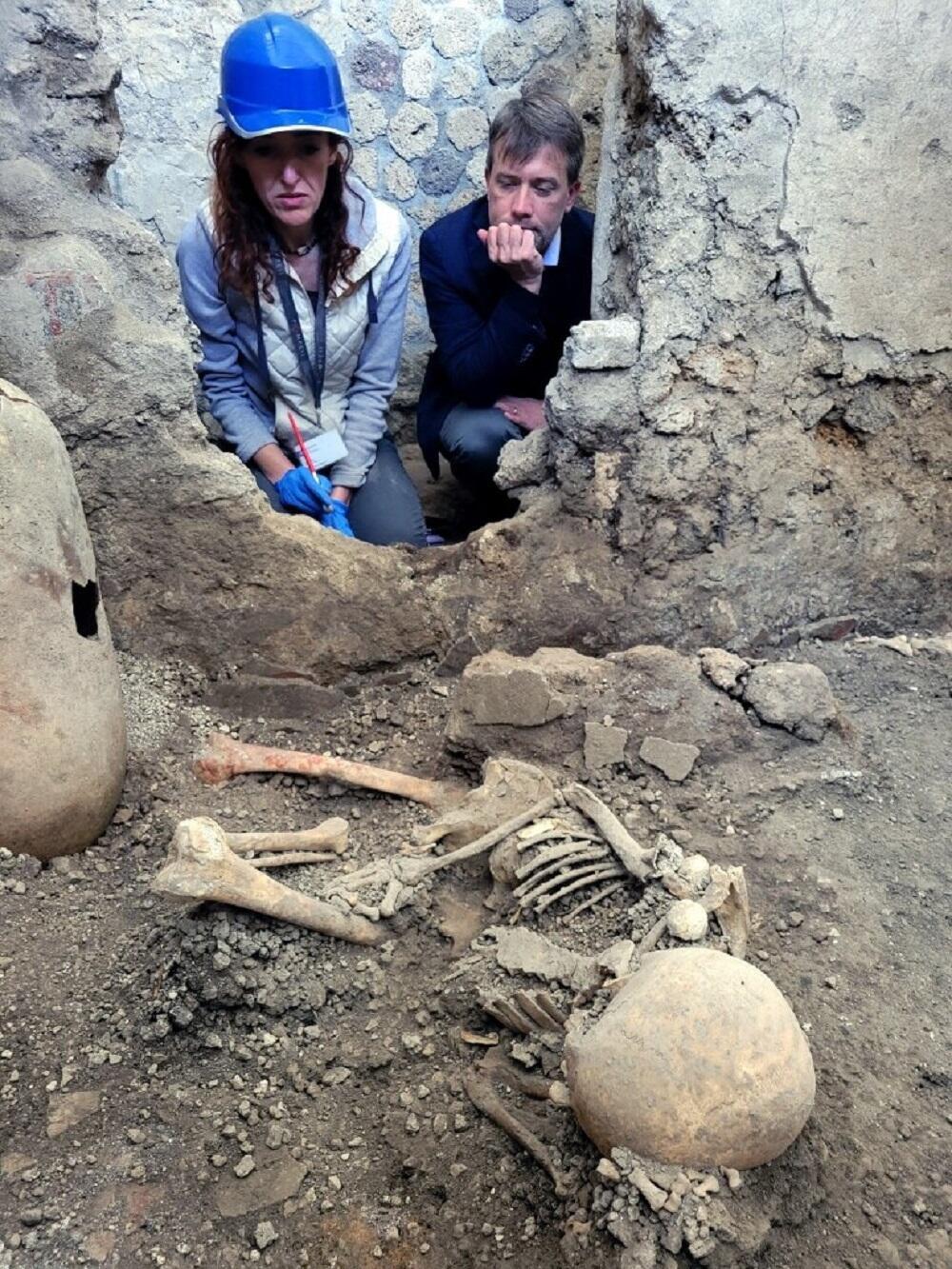Getting your Trinity Audio player ready...
Archaeologists have recently uncovered two additional skeletons of victims of the devastating eruption of Mount Vesuvius near Pompeii, an ancient Roman city in Italy’s Campania region.
Read More:
The skeletons belong to two men who perished during the volcanic eruption, which buried the city under ash and debris in 79 CE, leading to the Roman city’s amazing state of preservation.
Pompeii is located approximately 23 km southeast of Naples, on the southeastern slopes of Mount Vesuvius, north of the Sarno River. Pompeii and its neighboring city of Herculaneum were destroyed in the eruption of Mount Vesuvius, with Herculaneum being covered in volcanic ash and first discovered in 1710.
Pompeii, the larger and more important city, was also buried under a layer of about four meters of ash and volcanic debris and was accidentally discovered in 1748 by a farmer who was digging in his field and stumbled upon its ancient remains, nearly 1,700 years after being buried under the ash.
In 1793, an inscription reading "Rei publicae Pompeianorum" (to the Pompeien commonwealth) was discovered in the area, which confirmed the site was indeed the ancient city.
The remains of the two men, estimated to be at least 55 years old at the time of their death, were found in recent excavations. According to estimations, they were killed when an earthquake caused a wall to collapse in one of the rooms where they sought refuge.
The conclusion is based on the fact that one of the skeletons’ arms was raised in a defensive posture, as if trying to protect itself from something that was collapsing on top of it.
So far, remains of over 1,000 individuals have been uncovered throughout the extensive site of Pompeii, with the latest discoveries made in November 2020, when archaeologists uncovered two bodies, likely those of a young slave and their likely owner.
According to a statement from the Pompeii Archaeological Park, the two newly discovered victims likely died from injuries caused by the collapse of a part of the building where they were staying at the time.
They were found in what appeared to be a storage area inside a structure known as the "Chaste Lovers," where colorful wall paintings and skeletal remains of mules were previously unearthed, indicating the use of millstones for grinding grain into flour.
The skeletons were found lying on their sides, with their legs curled up, with one of the men wearing a ring on one of his left-hand fingers. Archaeologists estimate that 15% to 20% of Pompeii's population perished in the volcanic eruption, mainly from thermal shock caused when a massive cloud of gas and ash covered the city.
However, as revealed by recent research on the newly discovered remains, earthquakes before and during the devastating eruption, documented in the letters of the Roman writer Pliny the Younger—also took a heavy toll on lives.
Pliny the Younger’s letters on the event, which he sent to the Roman historian Tacitus, provide the only firsthand account of that period before geological analyses of the region's soil, and findings from the excavations shed additional light on what occurred in Pompeii.
"Among the causes of death, the collapse of buildings, in some cases due to earthquakes that accompanied the eruption, proved to be a lethal threat," the park said.
Pompeii's director, Gabriel Zuchtriegel told AFP that modern archeological technology is helping to "better understand the hell that completely destroyed the city of Pompeii in two days, killing many inhabitants: children, women, and men".
The excavation of the two skeletons and the accompanying findings in the ruins of the ancient Roman city, which was declared a UNESCO World Heritage Site in 1997 along with its neighboring Herculaneum, strengthens archaeologists' theories that much still remains hidden inside of Pompeii’s volcanic ruins.





